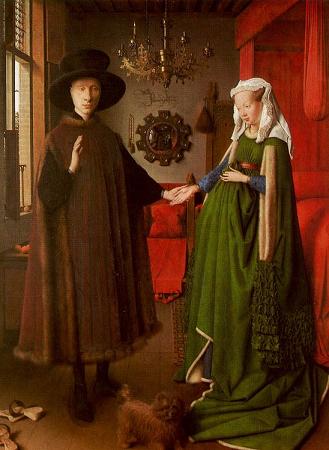Belgium Artist. Despite its size, Belgium has a long and distinguished artistic tradition that goes back to the Middle Ages, considerably pre-dating the foundation of the country itself. The Flemish Primitives were a group of artists active in the 15th and 16th centuries in the Southern Netherlands, which is present-day Belgium. They are known for their innovative use of oil paint and their highly detailed, realistic depictions of religious subjects. Artists such as Jan van Eyck, Rogier van der Weyden, and Hans Memling are considered some of the most important representatives of this movement. Symbolism emerged in Belgium in the late 19th century and was characterized by its use of symbolic imagery and its exploration of themes such as death, spirituality, and the subconscious. Artists such as Fernand Khnopff, James Ensor, and Léon Spilliaert are considered some of the most important representatives of this movement. Surrealism emerged in Belgium in the early 20th century and was characterized by its use of dreamlike imagery and its exploration of the irrational and the subconscious. Artists such as René Magritte, Paul Delvaux, and Marcel Broodthaers are considered some of the most important representatives of this movement. Mosan art is a regional style of Romanesque art from the valleys of the Meuse in present-day Wallonia, and the Rhineland, with manuscript illumination, metalwork, and enamel work from the 11th, 12th and 13th centuries. Among them the masterpiece of Renier de Huy and perhaps of the whole Mosan art Baptismal font at St Bartholomew's Church, Liège. The architecture of Roman churches of the Walloon country are also named Mosan, exemplified by the Collegiate Church of Saint Gertrude in Nivelles, and the churches of Waha and Hastière, Dinant. The Ornamental brassware is also a part of the Mosan art and among these dinandiers Hugo d'Oignies and Nicholas of Verdun. During the so-called Northern Renaissance, Belgium experienced an artistic boom, spawning the immensely popular Baroque Flemish school of painting. The cities of Bruges and Antwerp, some of the richest in the region, became artistic centres during the period. The artist Peter Paul Rubens painted in Belgium between 1609-1621, working for many royal patrons from his studio in Antwerp. Rubens' house in Antwerp, the Rubenshuis, is now a museum. Anthony van Dyck, celebrated for his painting of British court, including Charles I, was born in Antwerp. Flemish art was not confined to the boundaries of modern Flanders and several leading artists came from or worked in areas in which langues d'oïl were spoken, from the region of modern Wallonia, e.g. Robert Campin, Rogier van der Weyden and Jacques Daret. Joachim Patinir Henri Blès are generally called mosan painters. Lambert Lombard was a Renaissance painter, architect and theorist for the Prince-Bishopric of Liège. Gérard de Lairesse, Bertholet Flemalle were also important painters in the Prince-Bishopric of Liège. See also Bruegel Family Flemish genre painting is strongly tied to the traditions of Pieter Bruegel the Elder and was a style that continued directly into the 17th century through copies and new compositions made by his sons Pieter Brueghel the Younger and Jan Brueghel the Elder. Many of these are kermis paintings and scenes of peasants partaking other outdoor enjoyments viewed from an elevated viewpoint. Originating in France, the Impressionist style was also adopted by Belgian artists. Anna Boch, Eugène Boch, Georges Lemmen and Théo van Rysselberghe were all influential Belgian impressionist or neo-impressionist painters. During the 19th and 20th centuries many original romantic, expressionist and surrealist Wallon painters emerged, including Félicien Rops, Paul Delvaux, Pierre Paulus, Fernand Verhaegen, Antoine Wiertz, René Magritte, etc. The avant-garde CoBrA movement appeared in the 1950s. Surrealism developed in Belgium during the inter-war period. The best known Belgian surrealist, René Magritte, exhibited in 1927 for the first time. Jacques du Broeucq was a sculptor of the 16th century, known for his religious scenes and as the teacher of the famous Italian late-renaissance sculptor Giambologna, who was himself born in Flanders. Constantin Meunier was an influential Belgian sculptor of the late 19th-early 20th century, known for his figures, which unusually, often depict industrial workers.
more...














